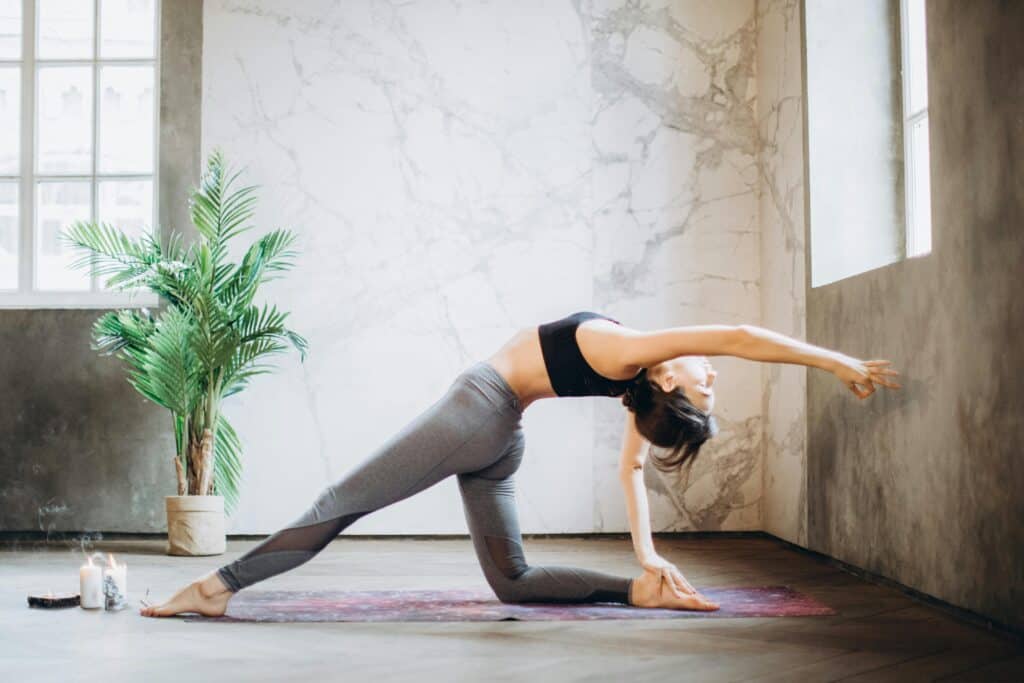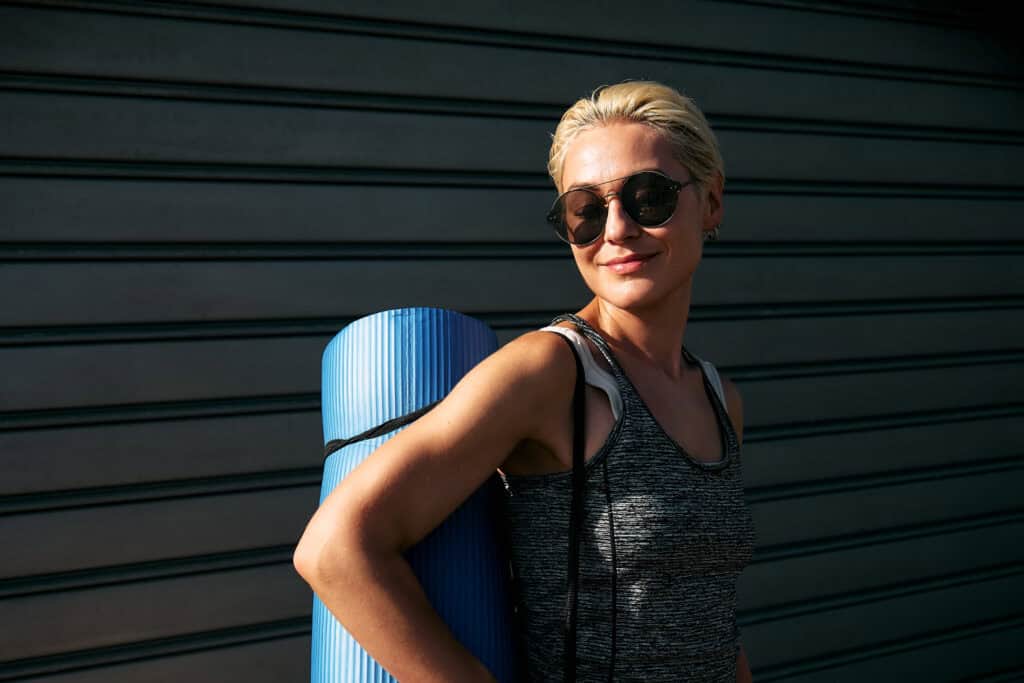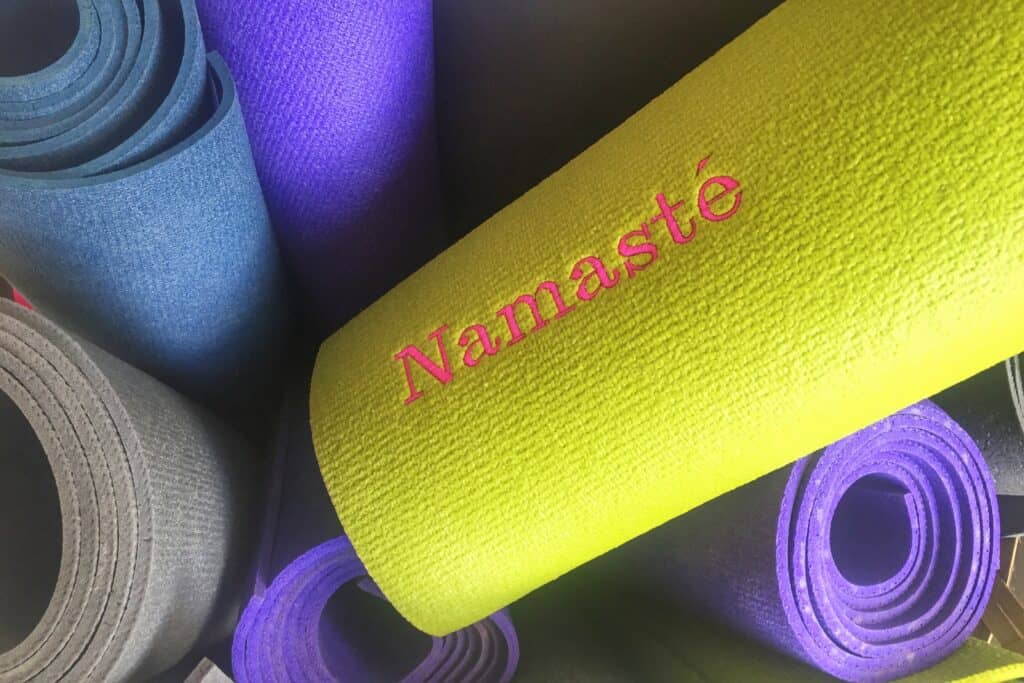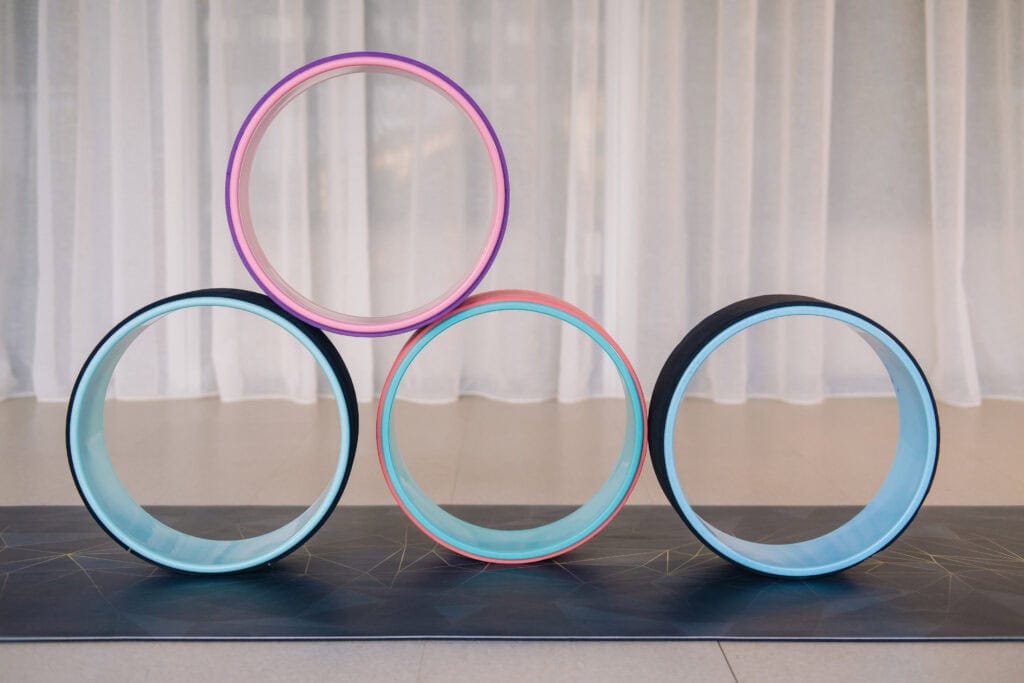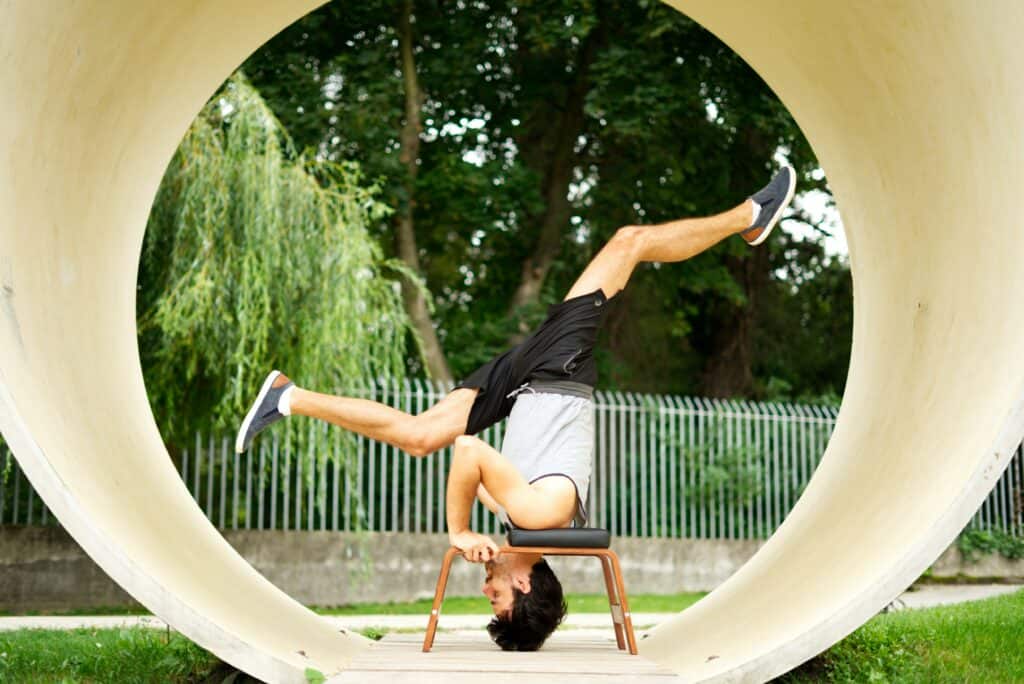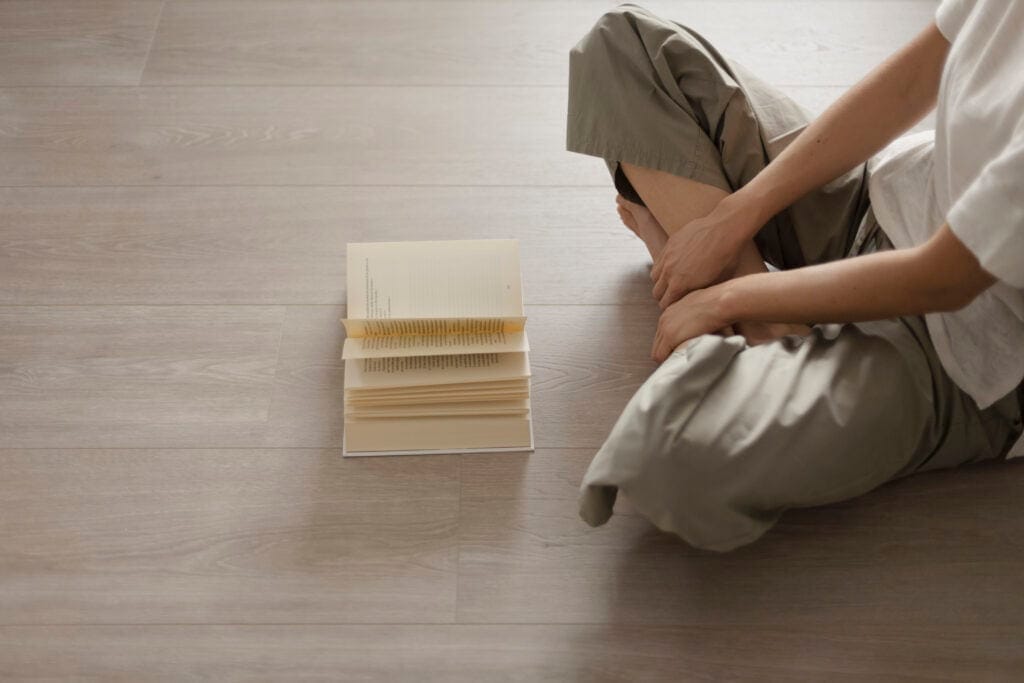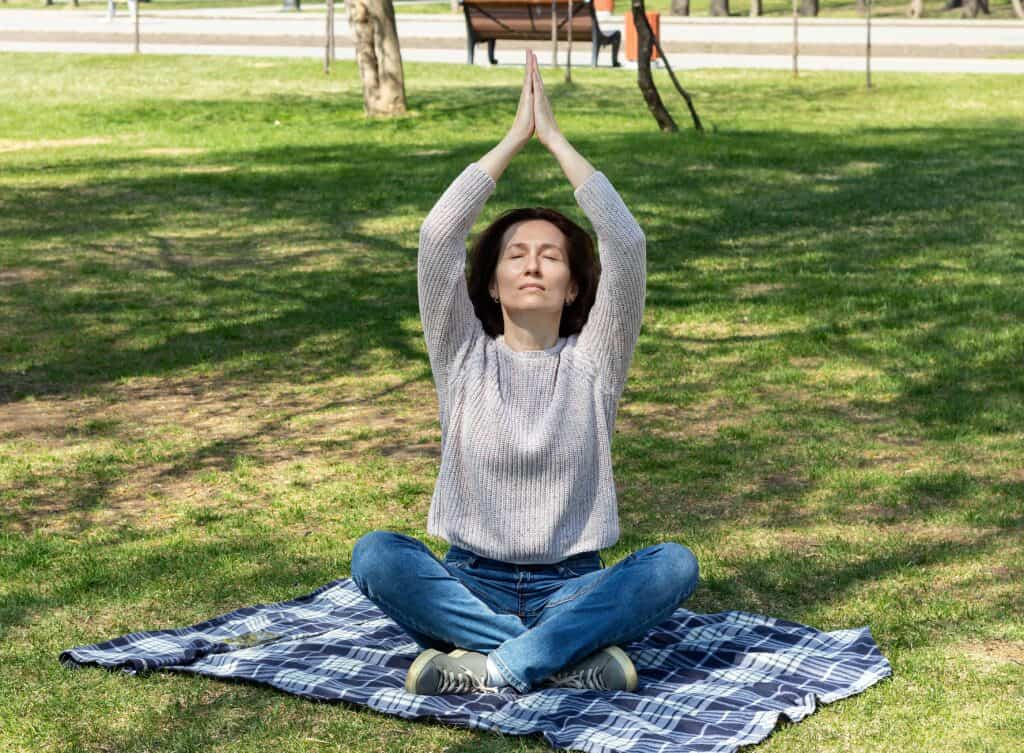Starting a home yoga practice can be a transformative experience, offering numerous physical and mental benefits. This article provides advice on getting started with a home yoga practice, including selecting the right style for your needs and creating an environment that encourages progress.
Firstly, we’ll help you choose the right yoga style that aligns with your personal goals and preferences. Subsequently, to foster a peaceful atmosphere for development and serenity, we’ll look into creating an exclusive space within your home specifically for yoga.
We will also cover the necessary equipment needed for effective at-home yoga practice and resources such as online classes or guided meditation apps that can assist you along the way. Finally, establishing a routine is crucial for success in any discipline; therefore, our beginner’s guide will offer suggestions on incorporating a daily yoga practice into your life seamlessly.
By following these steps on how to start doing yoga at home, you’ll soon embark on a fulfilling path toward improved well-being and spiritual growth.
Choose the Right Yoga Style
To make an informed decision, it is important to consider factors such as fitness level, goals, physical limitations or injuries and preferences in terms of pace and spirituality when selecting the yoga style best suited for you. Different yoga styles, each with their own distinct advantages, techniques and levels of intensity, exist. To help you make an informed decision, consider factors such as your fitness level, personal goals, physical limitations or injuries, and preferences in terms of pace and spirituality.
A Brief Overview of Popular Yoga Styles:
- Hatha: A gentle style focusing on basic poses (asanas) and breathing exercises (pranayama), ideal for beginners.
- Vinyasa: A dynamic flow-style practice linking breath to movement, suitable for those who enjoy variety in their workouts.
- Iyengar: Emphasizes precise alignment using props like blocks or straps; excellent for those recovering from injury or seeking detailed instruction.
- Kundalini: Combines postures with chanting, meditation, and repetitive movements called kriyas; appeals to spiritual seekers looking to awaken the energy within themselves through their daily yoga practice.
- Bikram/Hot Yoga: Consists of a series of specific postures practiced in a heated room; promotes detoxification while building strength and flexibility.
Once you have chosen a yoga style that resonates with you, it’s time to start your at-home yoga practice. Here are some tips to help you get started:
Set Up a Dedicated Space for Yoga Practice
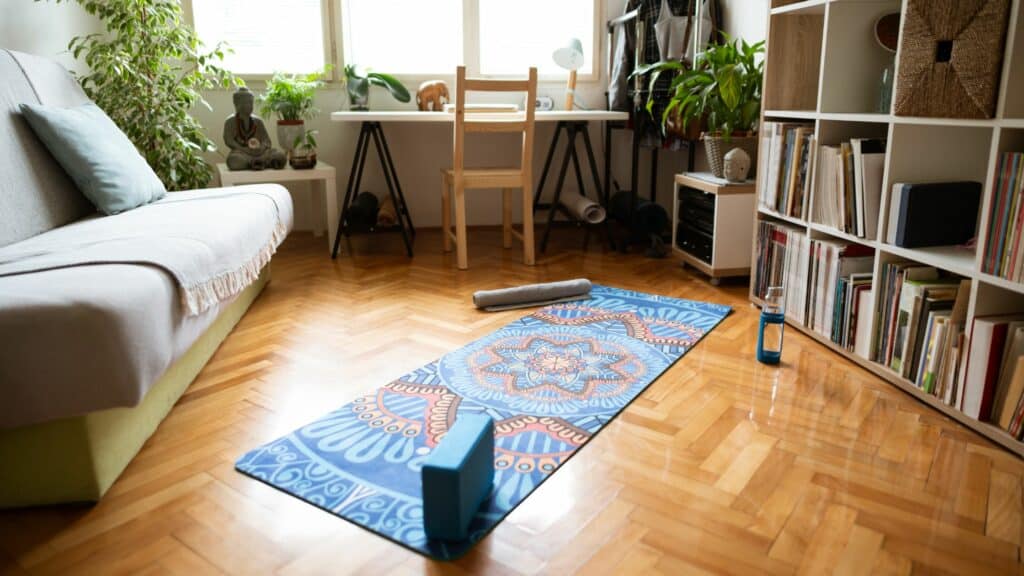
Designate a specific area in your home for your yoga practice. It doesn’t have to be a large space but should be quiet, clean, and free from distractions. You can decorate your yoga space with candles, plants, or other items that inspire you. Ensure you have enough room to move around and that your yoga mat fits comfortably in the space.
Choose the Right Location
Selecting an appropriate location within your home is crucial for maintaining focus during your daily yoga practice. Look for areas with minimal noise and foot traffic, such as spare rooms or quiet corners in living spaces.
Ensure Adequate Space
Your chosen area should offer sufficient room to perform various basic yoga poses, including standing postures, seated positions, and lying down stretches, without feeling cramped or restricted.
Create Ambiance
To enhance the spiritual aspect of your home yoga practice, consider adding elements that evoke feelings of serenity and relaxation – this can include candles or incense sticks, soft lighting, calming artwork, or even plants that purify indoor air quality like snake plants (Sansevieria) or spider plants (Chlorophytum comosum).
Keep Your Yoga Space Clean
Maintaining cleanliness in your practice area is essential for promoting positive energy flow during your at-home yoga sessions. Regularly clean your yoga mat and other equipment, remove clutter from the space, and ensure proper ventilation to create an inviting atmosphere that encourages relaxation and focus.
By following the steps for establishing your own yoga practice space at home, you can cultivate a regular regimen that supports physical healthiness, mental clarity and spiritual expansion. Don’t forget to check out our yoga classes and beginner’s guide to help you on your yoga journey.
Creating a dedicated space for your yoga practice is essential to getting the most out of each session. Having the proper arrangement can allow you to experience all the advantages yoga has. Now it’s time to gather any necessary equipment to get started on your journey towards improved well-being.
Gather the Necessary Equipment
To ensure your practice is comfortable and poses are done correctly, it’s essential to have the right equipment ready. This will make your practice more comfortable and help you perform poses correctly and safely.
Here are some of the basic items you’ll need:
- Yoga mat: A good quality yoga mat provides cushioning for your joints and helps prevent slipping during practice.
- Yoga blocks: These can be used to provide support in various poses, making them more accessible for beginners or those with limited flexibility. You can find a variety of materials and sizes available, such as foam, cork, or wood yoga blocks.
- Yoga strap: A useful tool for deepening stretches and improving alignment in certain postures; a simple belt or towel can work as an alternative if you don’t have a dedicated yoga strap.
- Bolster or blanket: Bolsters offer extra support during restorative poses while blankets add warmth and comfort during relaxation sessions like Savasana (Corpse Pose).
In addition to these basic items, consider investing in other props that cater specifically to your needs – such as a yoga wheel for backbends or a meditation cushion to enhance your seated practice. As you progress in your home yoga journey, you may also want to explore other equipment like resistance bands and balance boards.
You can see our guide to yoga gear for beginners here.
Don’t let the absence of equipment stop you from beginning your practice; instead, get creative and make do with what’s around you. Many household items can be used as substitutes – for example, using books instead of blocks or a belt instead of a strap. It’s essential to be imaginative and make the most of what you have until you’re able to purchase dedicated tools.
Find Resources to Guide Your Practice
Finding the right resources to guide your yoga practice at home is essential for a successful and enjoyable experience. With countless online platforms, apps, books, and videos available, choosing the best ones for you can be overwhelming.
Here are some tips on how to find quality resources that suit your needs:
Online Yoga Classes
Numerous websites offer online yoga classes with experienced instructors who can help you learn and progress in your practice.
Some popular options include YogaGlo, Gaia Yoga, and Alo Moves. These platforms often provide free trials or affordable subscription plans so you can explore different styles of yoga at your own pace.
YouTube Channels
If you prefer free resources, YouTube offers an abundance of high-quality channels dedicated to teaching yoga. Some well-known channels include Yoga with Adriene, Fightmaster Yoga, and KinoYoga.
Within these channels, you can easily search for specific types of practices or focus areas (e.g., beginner-friendly sequences or hip-opening poses).
Books & DVDs
For those who prefer traditional resources, numerous books and DVDs are available to guide your yoga practice.
Some highly recommended titles include The Heart of Yoga: Developing a Personal Practice by T.K.V. Desikachar, Yoga Anatomy by Leslie Kaminoff, and the DVD series Rodney Yee’s Yoga for Beginners.
These resources offer comprehensive guidance and instruction on different poses to aid in the development of personal practice.
Social Media & Online Communities
Besides instructional content, connecting with fellow yogis online can be a great source of inspiration and support. Social media platforms like Instagram or Facebook have many accounts dedicated to sharing tips, progress updates, and motivational quotes related to yoga. You may also find online forums such as Reddit’s r/yoga community, where you can ask questions or share experiences with others practicing at home.
Including these online sources in your at-home yoga practice can help you stay enthusiastic and keep on developing fresh methods as you advance in your well-being voyage.
By researching and exploring different resources, you can find the right guidance to help deepen your practice. Establishing a routine is key for staying consistent in your yoga journey and reaping all of its benefits.
Establish a Routine
To ensure you make the most of your yoga practice, and it becomes a part of your daily life, develop a regular routine. By setting aside time each day to practice, you’ll be more likely to stick with it and experience improvements in your overall well-being.
Determine Your Ideal Practice Time
The first step in establishing a routine is deciding when you will practice yoga at home. Consider experimenting with various times of day to discover which one is most suitable for you. Experiment with different times until you find what works best for you.
Set Realistic Goals
When starting out, set achievable goals for yourself so that you don’t become overwhelmed or discouraged by trying to do too much too soon. Begin with shorter sessions (15-20 minutes) and gradually increase the duration as your comfort level improves.
- Beginner: Aim for 10-15 minutes per session, three times per week.
- Intermediate: Aim for 20-30 minutes per session, four times per week.
- Advanced: Aim for 45-60 minutes per session, five or more times per week.
Use Online Resources and Apps to Stay Consistent
To help maintain consistency in your home yoga practice, consider using online resources such as YouTube channels like Yoga With Adriene, which offers free guided classes suitable for all levels of practitioners. Additionally, numerous yoga apps are available for download that can help you stay on track and provide motivation to continue your practice.
Track Your Progress
Keeping a journal or using an app to track your progress can be highly motivating, as it allows you to see the improvements in your flexibility, strength, and overall well-being over time. Note down the date, duration of each session, and any poses or sequences that were particularly challenging or enjoyable. This will serve as a record of your journey and help identify areas where further improvement is needed.
Incorporating yoga into your daily routine requires dedication and consistency; however, with patience and persistence, you’ll soon begin to experience its numerous benefits on both physical and mental levels. By establishing a regular practice at home using these tips above, you’re well on your way towards improved well-being through this ancient spiritual discipline.
FAQs in Relation to How to Start Doing Yoga at Home
How to Start Doing Yoga at Home for Beginners
If you’re looking to start a home yoga practice, there are a few things you need to consider. First, choose a suitable style that aligns with your goals and preferences. Then, set up a dedicated space where you can practice without distractions. Gather necessary equipment like a yoga mat, blocks, and a strap. Finally, find resources such as online classes or books to guide your practice, and establish a consistent routine.
How long should I do yoga as a beginner?
There is no one definitive answer to this question. Depending on your goals and objectives, you may want to practice yoga for different lengths of time each day or week. Generally speaking, however, it is recommended that beginners start with shorter sessions (30 minutes or less) and gradually increase the duration as they become more comfortable with the practice.
If you’re looking for a way to improve your wellness, consider starting yoga at home. Yoga is a great way to reduce stress, increase flexibility and strength, and promote relaxation. There are plenty of resources available online or in books to help you get started.
Once you’ve learned the basics, you can practice yoga anywhere – at home, at the office, or even outdoors!

